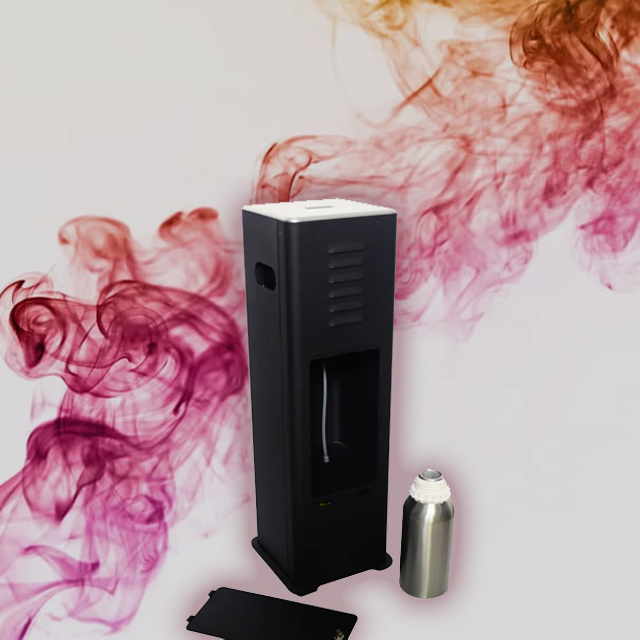
Scent machines are special effects machines that are designed to emit scents or fragrances into a room or environment to create a particular ambiance, mood or sensory experience. They are often used in theme parks, retail stores, hospitality and entertainment venues, museums, and other public spaces to enhance the sensory experience of guests or customers.
One of the key benefits of scent machines is that they can help to trigger emotions and memories, making them a powerful tool for marketing and branding. For example, a retail store may use scent machines to create a unique brand scent that customers associate with the brand and are more likely to remember.

How scent machines work
The machines work by heating up or atomizing a scented liquid or oil and then releasing it into the air in a controlled manner. The scented liquid or oil is stored in a reservoir inside the machine and is gradually released through a diffusion system that allows it to be spread evenly throughout the room or space. Scent machines can be programmed to release different scents at different times or to create a continuous scent in a particular environment. They can be used to create a specific ambiance or mood, such as a calming or relaxing environment, or to enhance the theme of an event or exhibition.
To use a scent machine, the machine needs to be filled with a scented liquid or oil and then set up in a suitable location. The machine can then be programmed to release the scent in a controlled manner, using a timer or other control system.
When using scent machines for live applications, there are a few precautions to consider:
- Safety: Always follow the manufacturer’s instructions and safety guidelines when using scent machines. Some machines may produce heat, use electrical current or require the use of water or oil, which can present safety hazards if not used properly.
- Sensitivities: Be aware that some people may have sensitivities or allergies to certain scents. It’s important to consider the potential impact on audience members or performers and avoid using scents that may cause discomfort or health issues.
- Ventilation: Proper ventilation is important to ensure that the scent is evenly distributed throughout the space and to avoid overwhelming the audience. Make sure that the space has adequate air circulation and that the scent is not too strong.
- Environment: Consider the environment in which the scent machine will be used. For example, some scents may be more appropriate for outdoor events or in larger indoor spaces, while others may be better suited for smaller or more enclosed spaces.
Different types of scent machines
There are several different types of scent machines available, each with its own unique features and capabilities:
- Nebulizing diffusers: These diffusers use compressed air to break up scented oils into a fine mist that can be dispersed into the air. They are effective at evenly distributing scent throughout a large space and are often used in commercial applications.
- Ultrasonic diffusers: These diffusers use ultrasonic vibrations to break up scented oils into a fine mist that can be dispersed into the air. They are often used in smaller spaces and are more quiet than nebulizing diffusers.
- Heat diffusers: These diffusers use heat to warm up scented oils, causing them to evaporate and release scent into the air. They are often used in smaller spaces and are more affordable than other types of diffusers.
- Fan diffusers: These diffusers use a fan to blow scented air into the room. They are simple and easy to use and can be adjusted to control the intensity of the scent.
- HVAC diffusers: These diffusers are installed in a building’s heating and cooling system and release scent into the air through the building’s air ducts. They are often used in large commercial buildings and are an effective way to evenly distribute scent throughout the building.
Overall, scent machines are an effective and innovative way to enhance the sensory experience of guests or customers and create a unique and memorable environment.

